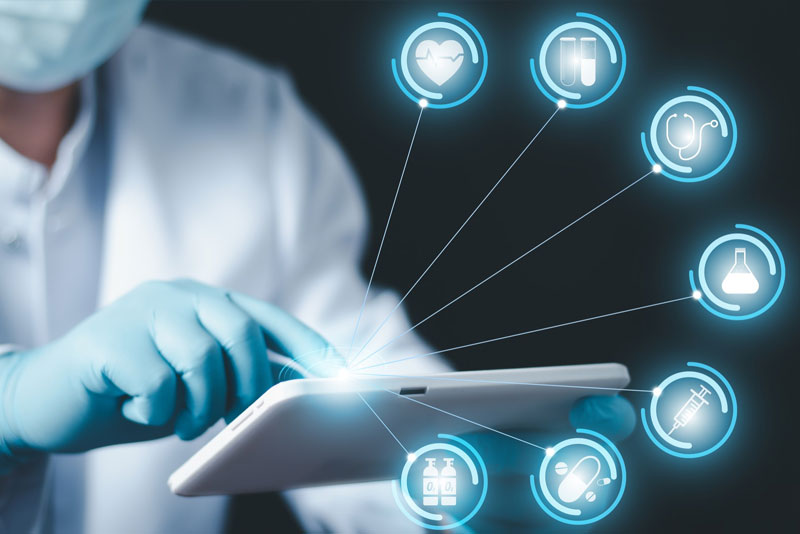With the increasing demand for electronic health records (EHRs), healthcare organizations are taking steps to convert one set/type of data into a different, more efficient format. Healthcare data conversion is a complex process, whether it’s converting paper documents to digital format, moving from an EMR to an EHR, or upgrading from one EHR system to a new one. Data conversion services aim to ease such transformations. Let’s take a look at what makes healthcare data conversion so challenging and top strategies for succeeding in the process.
Challenges of Healthcare Data Conversion
Healthcare data in unique in many ways, which makes it complex to convert:
- Patient data is spread out across many locations such as in EMR software, radiology information systems (RIS), pharmacy management systems, and other systems.
- The data appears in both structured and unstructured
- The data can be in different formats such as text, numeric entries, images, and so on.
- Healthcare data can have varying definitions. Clinicians may have different opinions about a particular treatment or cohort definition. Further, new research is coming out every day and views are constantly changing.
- Software programs do not recognize all data formats and this can lead to compatibility issues when migrating from one system to another.
- Poorly populated fields, field mismatches, incomplete data pieces, and inaccuracies can make data conversion very difficult.
Data Conversion in Healthcare – Strategies for Success
- Determine what Data will be Converted/Transferred: Conversion from paper to EHRs within a physician practice or clinic generally involves methods such as manual data entry or abstraction from paper records, computer data interfaces between existing practice management software or other systems, and medical record scanning services. Common data considered for conversion would include key patient demographic data, problem list, procedures done, current medications, allergies, referral-related information, medical device or implant information, immunizations, and legal documents. If you are moving to a new EHR system, all this data would already exist in an EHR format. However, even when updating to a modern EHR software, a practice would have to decide what data will be transferred in order to populate patient records with historical data. For instance, when designing and implementing Epic in John Hopkins Hospital, the following data was converted/considered for conversion:
- all existing data pertaining to patient information
- Patient visits from the last 10 years
- Lab results from the last three years, plus selected lab results occurring within the last 10 years
- Imaging results from the last 10 years
- Documents and notes from the last 10 years, including all documents authored in or received in EPR for the last 10 years, all clinical summaries authored by the hospital during the last 10 years
- Scanned documents
- Vaccinations and immunization data
- A fixed set of clinical observations
- Outpatient problem lists and medications
When making decisions about patient data retention, healthcare entities must meet their state requirements and consider their contracts, CMS designations and HIPAA regulations. The goal of the data conversion should be to ensure that providers have smooth and continuous access to all the necessary information about a given patient, while avoiding clutter.
- Budget: Identifying all the resources needed before the project begins is crucial. A phased approach can be useful when moving to a new EHR, but keeping two systems running at the same time can be costly. All key stakeholders should be informed about resources needed as well as the design, planning and validation work involved in each phase of the project. Successful healthcare data conversion also depends on the proactive participation and commitment of several teams at different stages of implementation.
- Ensure Data Quality and Integrity: Maintaining data quality when converting paper records or migrating to a new EHR system is essential for successful healthcare data conversion. Quality, accuracy, and consistency are key considerations. Companies providing medical data scanning services check for accuracy at each stage of the process and ensure that that data is error-free, valid and complete. Incorrect information can patient in many ways and also impact medical billing and reporting.
- Deal with Non-discrete Data: Data in non-discrete file types such as image-based documents/reports cannot be extracted or parsed into the target system. Non-discrete data works for organizations that don’t need to extract data from often and for healthcare systems that have more image or PDF files. Knowing how the modern system will support and display these simple data sets and standards is important if they are included in the data migration project. The goal should be to provide the information in a way as to promote informed clinical decisions and improve the patient, provider and clinician experience.
- Have a Strong Support Team in Place: Retain a team that has a good understanding of what a successful healthcare data conversion means and knows how to overcome or avoid common obstacles. The success of the data conversion project would depend on having a strong IT partner committed to ensuring that the medical practice can access patient data as the new EHR system and technologies are implemented.
Handling data conversion and document scanning in-house can be a difficult task for entities. Healthcare data conversion and medical record scanning services are a practical option to ensure secure, accurate, and timely solutions.




